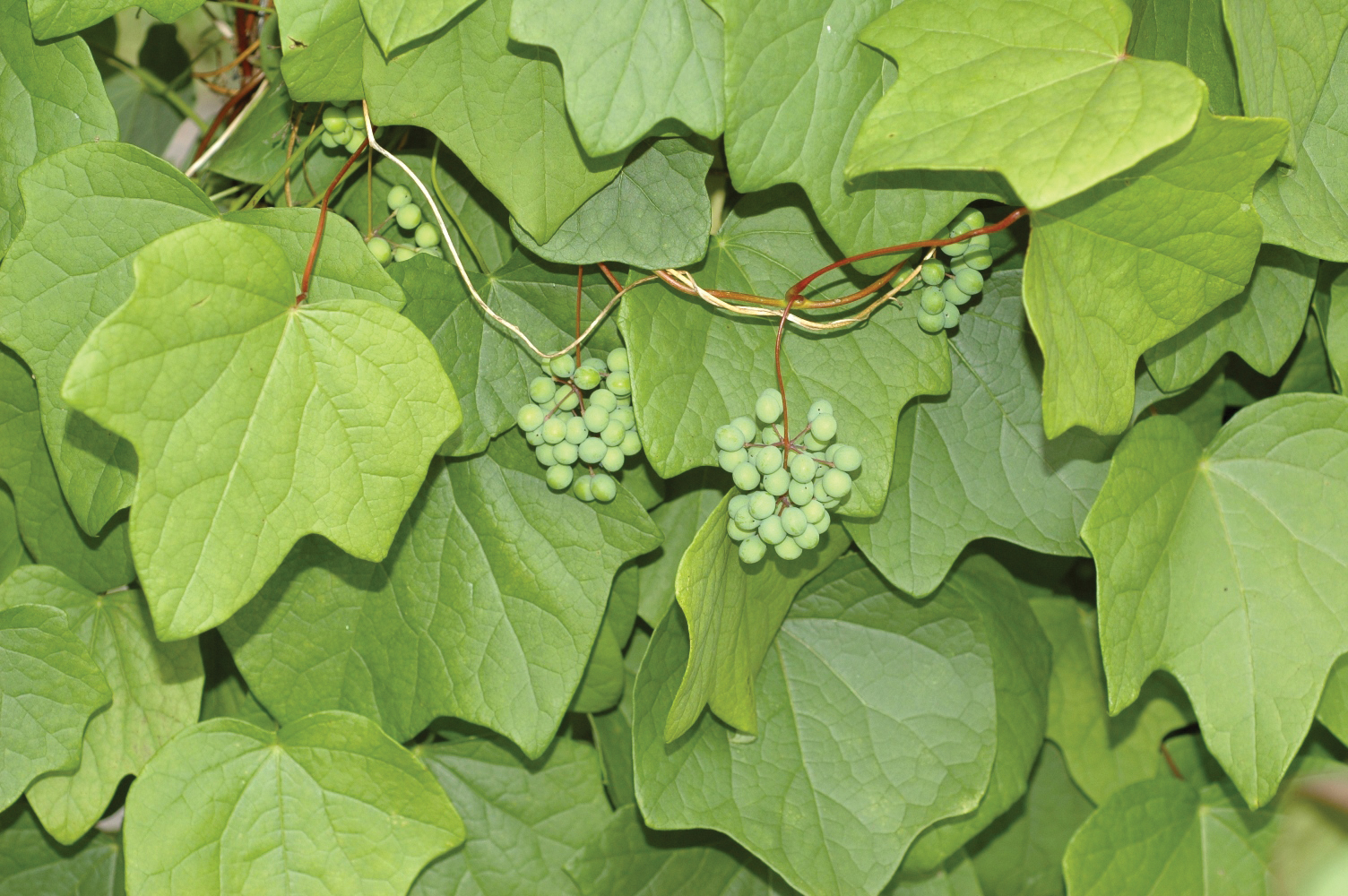For members of Arnold Arboretum plant expedition teams, the target taxa list is their guiding document: What are we looking for and where will we find it? Being interested in all things botanical, each collector is also invariably curious about which plants are on the other teams’ target lists. When these species are duplicated on a few different teams’ lists, a friendly competition arises that also unites them over a shared mission. As a first-time collector accompanying Robert Dowell on the Arkansas-Missouri Expedition (ARMOE), I was eager to test my field identification skills and compare expedition stories with the other two domestic teams in 2017. If the others were picking beechnuts in the Carolinas, I wanted to find them in Arkansas. If they were digging up red maple in Illinois, I wanted to find it in Missouri. There were several species targeted by multiple teams, but only one was successfully collected across all three domestic expeditions—Menispermum canadense (Canada moonseed).
Menispermum is a temperate genus in a primarily tropical family, and contains just two species: Menispermum dauricum from northeastern Asia, and M. canadense, found throughout much of eastern North America. The Arnold Arboretum has only one accession of this woody vine, obtained in 1994 from a cultivated source. The absence of wild material prompted its inclusion on the target list. Not only did our successes fulfill the Campaign goal of bringing in material of wild origin, but because they came from diverse geographic regions, they collectively improve the robustness of the Arboretum’s holdings. Growing multiple accessions of a species from across its native geographic range increases the overall genetic diversity represented in the Living Collections. These different individuals are likely to exhibit a broader range of species’ traits and adaptations, leading to a richer resource for researchers and visitors alike. And, generally speaking, growing multiple accessions of different provenances increases the odds of success (although this species is rather easy to cultivate).

Canada moonseed is not a showy vine—a former Arboretum researcher once called it “charming but overlooked” (Young, 2014). Plants can climb up to 5 meters (16.5 feet) tall, and can be mistaken for various species of Vitis, or wild grape. Unlike wild grape, however, all parts of the Canada moonseed are toxic. For the plant collector working in the field, diagnostic features are crucial in identifying the correct plant. A lack of tendrils—the threadlike tissue vines use to coil or spiral around supports—in Menispermum is a critical feature that can help distinguish it from its lookalikes. Another important diagnostic feature is its distinctive, crescent moon-shaped seed, from whence it takes its common name.
Citation: Woodruff, Kea. 2017. Three Times a Collection: The Quest for Moonseed. Arnoldia 75(3): 19–21.
Seed is a fickle commodity. For the plant collector, locating a target species and then finding it barren of fruit can be a disappointing experience. Fortunately, many species can be collected through other means. Seedlings or young plants are an alternative if granted permission and the local plant community will not be negatively affected. Collectors will often dig up seedlings early in an expedition, hedging their bets in case they never find seed later on. Such was the case in 2017. In Missouri, my collecting partner Robert Dowell identified a creek bed in Mark Twain National Forest as a likely habitat for Menispermum canadense. Looking in the understory beneath huge sycamore (Platanus occidentalis) trees, we found many vine seedlings, including Smilax spp. (cat briar), Vitis spp., and poison ivy (Toxicodendron radicans). It took close (and careful!) inspection to positively identify M. canadense among the others. Although seedlings were abundant, the lack of mature vines meant finding seed would be improbable, so we dug them up. The Wisconsin-Illinois team collected earlier in the fall, and found seed only after first collecting seedlings. Their stories kept us hopeful that the experience would be duplicated for us. And, sure enough, later that same day, while creeping slowly along the road, we found M. canadense plants bearing fruits which we harvested with much jubilation. The Coastal Southeast team eventually collected their seedlings in North Carolina, too.When we all got back and compared notes, there was a great sense of shared excitement that multiple teams collected this species, yielding six new accessions. All three teams found Menispermum canadense in shady understories, very near a creek, and in the same habitat as poison ivy. Once old enough to be planted out, these additions will provide an interesting native species to the shrub and vine collection. Easy to grow, this vine is generally free of insect predators and disease, and tolerates a range of conditions from full sun to full shade when in cultivation. This broad adaptability increases the likelihood that individuals from all three collection sites will thrive in Boston, giving Arboretum staff and future visitors a chance to observe and study potential differences in habit and performance among them.

Bibliography
Ortiz, R.D.C., Kellogg, E.A., and Van Der Werff, H. 2007. Molecular phylogeny of the moonseed family (Menispermaceae): Implications for morphological diversification. American Journal of Botany 94: 1425–1438.
Young, S.T. 2014. Untangling the ways of lianas. Silva (The Newsletter of the Arnold Arboretum) 14:10.
Kea Woodruff is the Plant Growth Facilities Manager at the Weld Hill Research Building.